Cork artist: ‘I got to see climate change at first hand’
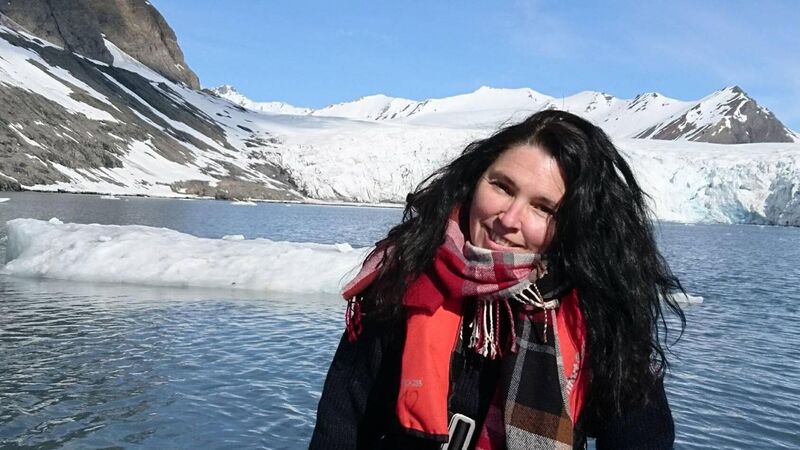
WHAT struck artist and former physicist, Angela Gilmour, on an expedition to the Arctic Circle during the summer, was its fragility, with melting glaciers a common occurrence.
Relatively speaking, the weather was “unbelievably warm,” according to Angela, a Scotswoman who now lives in Cork. She says she wore a t-shirt on some days, during the three week expedition on the Barquentine Tall Ship.
Her response to her Arctic trip is an exhibition entitled ‘Arctica: the last fragments’, which opens this Thursday, at Studio 12 at the Backwater Artists Group, Wandesford Quay.

Angela was astonished at how blue the sky was and she has depicted it in oil paintings. It is contrasted with white ice and snow.
“Our guide said she had never seen so many days in a row with blue skies.
“We had some bad weather but most of the time, the sky was bright blue.”
Climate change is acutely evident in the Arctic Circle. Angela was there with 29 other artists, scientists and innovators, living and working aboard the three-mast ship, which sailed the waters of the international territory of Svalbard, an Arctic archipelago just ten degrees latitude from the North Pole.
Angela’s art is inspired by scientific observation. In her new exhibition, she looks at the way nature is affected by climate change and how the actions of humans drive that change. Her work combines landscape, emotion and data to emphasise the fragility of life.

Originally, Angela worked as a physicist in Scotland. She then worked as an engineer in Limerick where she met her husband. He got a job in Cork so the couple now live in Macroom.
“Coming to Ireland was always a plan,” says Angela whose mother is from Donegal and whose father’s parents were Irish. Over the years, she would regularly visit Ireland during the summer.
As well as being a scientist, Angela always kept up her art work.
“Even doing my physics degree, I was doing night classes in art. I got the top prize for art in my school in the final exams.”
A native of Glasgow, Angela considered going to art college after school. But her father felt this would be impractical and wouldn’t necessarily lead to a job.
“I love physics. I knew I could keep up my art while studying and working in physics.”
With time on her hands in Cork, Angela attended the Crawford College of Art and Design, graduating in 2015. She was subsequently awarded Student of the Year by the Lavit Gallery and Cork Arts Society.

Being in a full-time artistic environment was a bit of a culture shock initially.
“It’s not the case that this answer is ‘right’ and that answer is ‘wrong.’ I found it quite hard at first. But science, like art, is creative.”
Angela’s residency in the Arctic Circle was organised by a not-for-profit organisation in New York, called The Farm. The aim was to bring artists and scientists together to respond to climate change. Angela was well qualified for the residency. She even has a day skipper qualification.
“It was strange in that the areas where man was present had very little snow. A lot of the time we were in areas where humans don’t normally go. It was like Narnia. It was stunning. Where the glaciers had retreated, you could see pieces of them falling off. This was seeing climate change happening.”
While on the three-week expedition, Angela went hiking every day with guides that had rifles.
“You’re not allowed go outside of town unless you’re trained to use a rifle,” she explained.
The rifle is a last resort. The guides would scan the area to be climbed and use flare guns to scare any polar bears away and to make sure there is no wildlife around.
“The last thing they want you to do is harm the wildlife.”

While the temperature during the day was around 12 degrees, Angela says it felt like 18 degrees.
“We met scientists involved in using weather balloons. All over the world, at the exact same time, balloons go 12km up and record pressure and temperatures. The information is used to predict our weather systems.”
Angela finds climate change “quite worrying”.
“ We’ve set it in a certain motion. It’s very hard for people to turn back from being industrialised. But I do think there are so many things we can do. I was brought up by my mother with the mentality of make-do, mend and re-use. We are a throwaway culture. That has to stop.”
The residency included cleaning up the environment.
“We found an old TV set. We had huge containers and we collected plastic as we went along. The plastic and other rubbish is coming in from the sea, from all over the world. We even found Coke bottles. Some wildlife was trapped in the plastic, such as birds.”

Angela and her fellow Arctic explorers spent time in Svalbard. It has a population of 2,000, most of whom are Norwegians. The rest are from all over the world.
The problem that Svalbard is experiencing are cruise ships coming in with all the potential damage to the environment from possible fuel spills. And there’s waste with thousands of passengers disembarking from the ships for four hours.
“Svalbard needs an economy but too many people arrive there. There are no indigenous people there.”
Angela, who makes prints as well as oil paintings, has stored up a lot of material for future projects.
“I’m only back from the trip a few months. I want to take my time. I find drawing and sketching is the best way for me to absorb what I’ve experienced.”
‘Arctica: the last fragments’ runs from November 8 to 29 at Studio 12 in the Backwater Artists’ Group, Wandesford Quay.
The exhibition will be launched by Dr Mark Jessop, UCC lecturer in zoology, in association with National Science Week on Thursday, November 7.
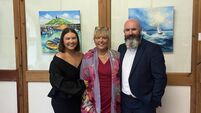
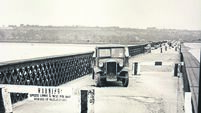
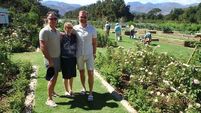
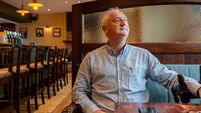
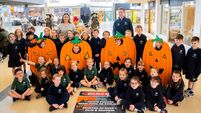
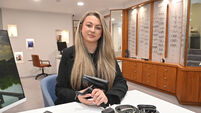
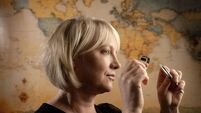
 App?
App?


